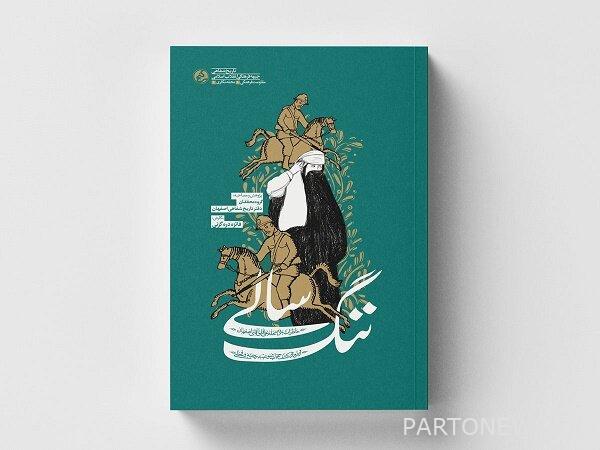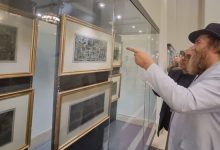Narratives from the dark years of the discovery of Rezakhani’s hijab – Mehr news agency Iran and world’s news

According to Mehr reporter, the novel “Nang Sali” written by Faezeh Valley pickingtells the memories of the people of Ali Qoli neighborhood of Mr. Isfahan from the era of hijab discovery, the prohibition of fasting and famine, which was recently published by “Rah Yar” publishing house.
The first whispers of changing clothes started in 1306. On March 29, 1306, Reza Shah’s family went to Hazrat Masoume’s pilgrimage without a full hijab to attend the handing over of the year ceremony.s) The news of this boldness reached the ears of the people and Sheikh Mohammad Taqi Bafqi, who was one of Qom’s clerics. First, he sent a message to the Shah’s family that if you are Muslim, you should not attend in this condition; But when he saw that the message was not effective, he personally went to the shrine and warned the Shah’s family. Hearing this news, Reza Shah went to Qom. He entered the Holy Shrine with his boots and cursed and beat Bafqi. Bafghi was arrested and exiled from Qom. This was Reza Shah’s first open opposition to the clerics.
The next step, formalizing the change of clothes, i.e. turning this plan into a law, was put on the agenda and the bill was submitted to the parliament. With the approval of the plan, according to the uniform dress code, men’s formal dress became a Pahlavi hat, a short dress, either a bodice with an Arabic collar or a lapel collar, a shirt and pants. The clergy were not exempt from this rule; Except for a few special classes such as taqlid authorities, mujtahidans, students studying jurisprudence and some other groups. The rest of the clerics should also get a license to wear clothes by taking an exam and getting approved by the Ministry of Education.
The influence of the clergy on the people was not hidden from anyone and this law could reduce their power. The people who saw the determination of the Pahlavi officials to implement this law were serious, first they tried to follow ways other than disobeying the law; Ways like getting a license and being subject to exceptions.
With Reza Shah’s trip to Turkey and observing the situation in that country, the process of discovering the hijab accelerated, so that in July 1313, according to an order to the Minister of Culture at the time, Ali Asghar Hekmat, he demanded measures to remove the veil of women. To this end, Kanon Feminine (Women) was formed with the presence of women from the affluent class of the society and tried to praise non-hijab.
Due to the advance People’s religion, changing women’s clothes and uncovering their hijab was not an order that could be easily implemented. People and scholars protested this law, the most important of which was the incident of Goharshad. On July 21, 1314, they shot the people of Mashhad who had gathered in Goharshad Mosque to protest against the change of dress law and suppressed the protest in the most violent way possible. So that the bodies of those killed in this tragedy were sent to the mass grave by truck.
Then they tried to provide the grounds and prerequisites for this law. The first task was to weaken and destroy modesty and chastity in society. They entrusted this work to the press and started their work by officially announcing the news of the discovery of the hijab on January 17, 1314. The printing of naked and half-naked pictures of women, the report of the arrival of Turkish female actresses to Iran, the printing of numerous articles by local and foreign authors about love and youth and girls’ higher education, etc., were among the actions taken by the press in line with this goal.
The next step was to put pressure and restrictions on women wearing the hijab in using public facilities, so that they did not have the right to board a train, car, or train, and were prohibited from going to public bathrooms, cinemas, and similar places. There were also celebrations known as “Kashf Hijab Festival”.
The women of government employees and different classes implemented this order by participating in those celebrations without veils and hijabs. even to buy new and western clothes, it’s helpful Hi They addressed government officers and employees.
Letters and notices for the implementation of the plan were sent one after the other to the administrative departments to deal with those who disobey the law. The regions of the country were not the same in terms of religious tendencies; Therefore, the process of implementing the hijab was different in the cities. Less attention has been paid to the methods that people took when facing this law, the resistance they did, and the atrocities that were committed against them. In addition, dust has settled on it due to the passage of time, and those who have the memories of this era in their chests are living old age.
Isfahan is a religious and traditional city that is famous for having sincere scholars and religious people in history. “Nang Sali” is part of the memoirs of the women of the traditional and pious Ali Qoli neighborhood of Mr. Isfahan; Memories of believing women who guarded their safe and chaste privacy. Greetings to all of them!
This book is written in three chapters: first; “Curtain” which reveals the days of chaos and anxiety, second; “Shahneshin” which are inscriptions of secret devotion to Sayyid and Salar of martyrs and the third; “Khakneshin” which is stories about the days of famine and disease.
In a part of this book we read:
“Like a piece of ice
Mones Ahsani, born in 1312
my grandmotherAbajiI called out. in the afternoon, Abaji He said, get up so that we can return home before the Ajans are found. with mother and Abaji We walked towards the house. near the bathroom Mirza Baqer when we arrived Ajani He stopped us. Abaji A turquoise headscarf was on her head and she was wearing another scarf under it. Ajan came towards me with the same tall and square shoulders Abaji And with the hand that did not have a wand, a scarf Ash pulled the We screamed and shouted and I kept begging him and saying: “Ajan, Bark Allah, you are a scarf to God Abaji don’t tear me apart for God’s sake.”
He put a scarf under his high black boots and pulled it on. He repeated this until he broke into pieces. hands and feet Abaji you were shaking His mother took his hand and sat him on the platform at the end of the bathroom. He was holding his leg tightly and crying. Batch Abaji I took it in my hand. It was like a piece of ice.
Secret ways
Zeenat Sadat Khansari, born in 1326
According to his mother, Turan Khansari
Our house was at the end of the cabbage garden alley. At the end of every alley, a policeman in a brown uniform and a cap stood guard. If they took someone’s tent, they would put it under their boots and pull it until it was torn to pieces. He was our neighbor’s bathroom worker. In the nights when we wanted to go to the bathroom, we coordinated with him. We used to go to Haj Kazem’s bath. He would open the bathroom door for us. Sometimes one of the men of the house accompanied us to the bathroom. We lived in the same house with my in-laws. We spent those years like this.
These were defined by my mother. I was six years old when I went to school. The back of our house leads to a dead end. There was a way to the next dead end from the yard of that house. These ways were a relic of the ban on hijab.
Horseman
Mehdi Akhan Nilchiborn in 1311
The woman was holding her hands on her head. running running He reached the alley. The sound of horseshoes was getting closer and closer. The dust rose into the air. The horse rider was in a tense uniform; With flint mustaches and a Pahlavi hat. He entered the alley as fast as the wind. It didn’t take long before the woman screamed Sheehe The horse bolted. I did not dare to enter the alley. Right there at the end of the palace Sanbulistan I was standing. The tall woman was crying. He shouted and cursed Ajan from the bottom of his heart: “No, don’t see it, man.” No, don’t see it.” Even though I was small, I still hear his voice.
Ajans were spread all over the city. A woman should not be able to cross an alley or a street with a tent. They rode horses and roamed the neighborhoods. They pulled veils and scarves from women’s heads and tore them to pieces…
motherlessness
Seyed Ali Asghar Mir Saidi, born in 1331
According to his mother, Hajiya Khanum Firouzeh
I did not want to leave the house. I didn’t want to look at those agents Khadabi get the news Our house is in Ihram alley Weaver I see Was; Above the clay pulpit, near the Mirza Baqir mosque. It was just a while ago; In one of these alleys. Where are the woman’s short steps and where are the man’s steps? Where are my mother’s delicate hands and those hands rough Where are you? They pulled his tent. They trampled and tore them to pieces.
From that day on, every day my mother’s condition got worse and worse. The doctor said the fierce done. He said he was very scared. It didn’t last long. One day I saw that he was not breathing anymore. Every Ajan was a murderer in my eyes; The murderer who took not only my mother’s tent, but also her life; However, many honorable people died due to tragedy. all childhood M passed away in motherlessness.
The book “Shame of the Year” in 84 pages with a price of 40 thousand tomans is available to those interested.

